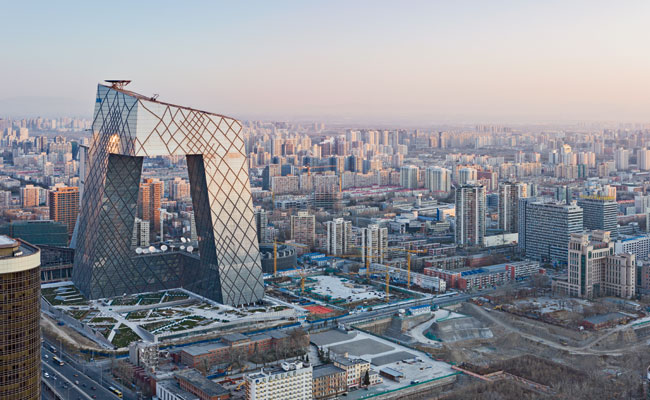China's residential air conditioning prices set to increase

|
The latest BSRIA AC report shows that the average manufacturing selling prices of residential air conditioners in China are on an upward trend. Although the seasonal sales promotions try to limit or even reduce prices periodically, basic average prices of residential air conditioners are on an upward trend. At present, the average price of residential air conditioners (mainly single splits with capacity below 5kW) is close to RMB 3,000, and it is expected to move to higher prices, between RMB 3,000-3,500 in the next few years.
The increase in basic price levels is a result of an increase in the sales of high-end and more energy-efficient products, rather than the manufacturers intentionally raising prices. There has been a significant shift in consumer demand (where previously the main criterion was price) towards units providing more efficient solutions with smart features, which also ties in with the current and expected growth in smart homes and devices in China.
For OEMs needing in-depth AC data for AHU, chillers, large packaged, mini-splits, VRF, Windows and Movables, BSRIA analysis of sales volumes, values, regions, major players, industry trends and forecasts is an essential planning aid.
According to published data, in China the proportion of inverter type residential air conditioning exceeded 50% in the first half of 2019. The proportions of smart residential air conditioning units exceeded 30%, with the market for these medium and high-end models continuing to increase their share.
Although the cost of raw materials is also an important factor affecting air conditioning prices, there are a lot of uncertainties surrounding this. As an example, global copper prices experienced a large fluctuation in the first half of 2019. In January and February, copper prices rose rapidly due to low inventory levels and positive news regarding the China-U.S. trade war. However, by May-June, copper prices declined sharply as tensions in the trade war worsened and global investors worried that the dispute would weaken demand for copper and therefore pushed copper prices down. It is expected that in future, the price of raw materials will still be affected by many uncertain factors such as global economic environment, market supply and demand as well as inventory levels. Therefore, it is difficult to predict how much impact the cost of raw materials will have on the production cost of air conditioning units.
Air conditioner manufacturers are also eager to reduce the level of price competition and increase margins through product and technology upgrading, by introducing interaction with mobile internet, Internet of Things, cloud computing, AI and other technologies. It has taken a few years for the market for smart air conditioners to take off. However, going forward, it is expected that the growth of smart air conditioners will benefit from the rapid growth in the smart appliances and smart homes market in China which is expected to see a CAGR growth of some 30% between 2018-2030.
[edit] Splits Systems (In-Depth Air Conditioning 2018)
For OEMs needing in-depth AC data for AHU, Chillers, Large Packaged, Mini-Splits, VRF, Windows and Movables, BSRIA analysis of sales volumes, values, regions, major players, industry trends and forecasts is an essential planning aid.
[edit] About this article
This article was authored by BSRIA's Worldwide Market Intelligence (WMI) division and first appeared on the BSRIA website in September 2019. It can be accessed HERE.
BSRIA is a non-profit distributing, member-based association providing specialist services in construction and building services. More information at www.bsria.co.uk.
Other articles by BSRIA on Designing Buildings Wiki can be seen HERE.
[edit] Related articles on Designing Buildings Wiki
- Absorption refrigeration.
- Africa tops world AC growth forecasts.
- Air conditioning in non-domestic buildings.
- Air conditioning inspection procedure.
- Air handling unit.
- BREEAM Impact of refrigerants.
- Building Automation and Control System BACS.
- Cooling systems for buildings.
- Fan coil unit.
- Global Air Conditioning Study 2016.
- How to Use Your Air Conditioning Energy Assessments to Reduce Energy Costs.
- HVAC.
- Refrigerants.
- Variable air volume VAV.
- Variable refrigerant flow VRF.
- Workplace air conditioning.
--BSRIA
Featured articles and news
Infrastructure that connect the physical and digital domains.
Harnessing robotics and AI in challenging environments
The key to nuclear decommissioning and fusion engineering.
BSRIA announces Lisa Ashworth as new CEO
Tasked with furthering BSRIA’s impressive growth ambitions.
Public buildings get half a million energy efficiency boost
£557 million to switch to cleaner heating and save on energy.
CIOB launches pre-election manifesto
Outlining potential future policies for the next government.
Grenfell Tower Inquiry announcement
Phase 2 hearings come to a close and the final report due in September.
Progress from Parts L, F and O: A whitepaper, one year on.
A replicated study to understand the opinion of practitioners.
ECA announces new president 2024
Electrical engineer and business leader Stuart Smith.
A distinct type of countryside that should be celebrated.
Should Part O be extended to existing buildings?
EAC brands heatwave adaptation a missed opportunity.
Definition of Statutory in workplace and facilities management
Established by IWFM, BESA, CIBSE and BSRIA.
Tackling the transition from traditional heating systems
59% lack the necessary information and confidence to switch.
The general election and the construction industry
As PM, Rishi Sunak announces July 4 date for an election.
Eco apprenticeships continue help grow green workforce
A year after being recognised at the King's coronation.
Permitted development rights for agricultural buildings
The changes coming into effect as of May 21, 2024.






















